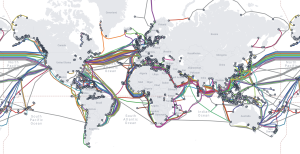The Future of Satellites: Revolutionizing Global Connectivity
The future of satellites holds great promise for revolutionizing global connectivity, enabling faster and more reliable communication, navigation, and remote sensing. With advancements in space technology, satellites are becoming increasingly important for a wide range of applications, from telecommunications and navigation to weather forecasting and Earth observation.
One of the most significant trends in the future of satellites is the development of small satellites, also known as smallsats. These satellites are smaller, lighter, and less expensive than traditional satellites, making them more accessible to a wider range of organizations and countries. Smallsats are being used for a variety of applications, including Earth observation, communications, and scientific research.
Another trend in the future of satellites is the use of constellations, which involve launching multiple satellites into orbit to provide global coverage. Constellations are being used for a range of applications, including telecommunications, navigation, and Earth observation. For example, the Iridium NEXT constellation, which was launched in 2017, provides global coverage for mobile communications, while the OneWeb constellation, which is currently being launched, will provide global broadband internet access.
The future of satellites also holds great promise for enabling new technologies, such as the Internet of Things (IoT) and 5G networks. Satellites will play a critical role in providing connectivity for IoT devices, which will require low-latency and high-bandwidth connections to function effectively. Additionally, satellites will be used to provide backhaul connectivity for 5G networks, enabling faster and more reliable data transfer.
In terms of navigation, satellites will continue to play a critical role in providing location information and timing signals. The Global Positioning System (GPS) and other satellite navigation systems, such as GLONASS and Galileo, will continue to be used for a wide range of applications, from aviation and maritime to personal navigation and tracking.
The use of satellites for Earth observation is also becoming increasingly important, as they provide critical information for monitoring climate change, tracking natural disasters, and managing natural resources. Satellites such as Landsat and Sentinel-2 are being used to monitor land use and land cover changes, while satellites such as GOES-R and Himawari-8 are being used to monitor weather patterns and track severe weather events.
Advancements in Satellite Technology
There have been significant advancements in satellite technology in recent years, driven by improvements in materials, manufacturing, and design. One of the most significant advancements has been the development of new propulsion systems, such as electric propulsion and advanced ion engines. These propulsion systems are more efficient and provide longer mission durations, enabling satellites to stay in orbit for longer periods of time.
Another area of advancement has been in the development of new satellite designs, such as the use of inflatable spacecraft and 3D printing. These designs enable the creation of larger and more complex spacecraft, while also reducing the cost and weight of launch. Additionally, the use of advanced materials, such as carbon fiber and nanomaterials, is enabling the creation of stronger and more durable spacecraft.
The development of new sensors and instruments is also an area of significant advancement in satellite technology. For example, the development of synthetic aperture radar (SAR) and hyperspectral imaging instruments is enabling the collection of higher-resolution and more detailed data. Additionally, the use of advanced data analytics and machine learning algorithms is enabling the extraction of more insights and information from satellite data.
Challenges and Opportunities
Despite the many advancements in satellite technology, there are still significant challenges and opportunities that must be addressed. One of the most significant challenges is the increasing amount of space debris in Earth’s orbit, which poses a risk to operational satellites and spacecraft. To address this challenge, there is a need for more sustainable and responsible satellite operations, including the use of debris removal technologies and more efficient launch systems.
Another challenge is the need for more international cooperation and regulation, to ensure that the benefits of satellite technology are shared equitably and that the risks are managed effectively. This includes the development of new international agreements and standards, as well as the establishment of new regulatory frameworks and institutions.
Finally, there is a need for more investment in satellite technology, to support the development of new missions and applications. This includes investment in new launch systems, such as reusable rockets, as well as investment in new satellite designs and technologies. By addressing these challenges and opportunities, we can ensure that the future of satellites is bright and that the benefits of satellite technology are shared by all.
Conclusion
In conclusion, the future of satellites holds great promise for revolutionizing global connectivity, enabling faster and more reliable communication, navigation, and remote sensing. With advancements in space technology, satellites are becoming increasingly important for a wide range of applications, from telecommunications and navigation to weather forecasting and Earth observation. By addressing the challenges and opportunities facing the satellite industry, we can ensure that the benefits of satellite technology are shared equitably and that the risks are managed effectively.

